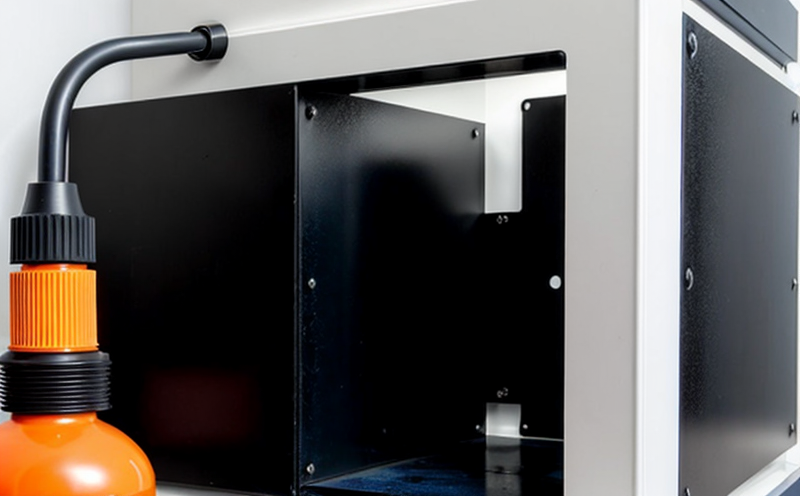DIN EN ISO 16276 Adhesion Testing of Protective Surface Treatments
The DIN EN ISO 16276 standard provides a comprehensive framework for assessing the adhesion properties of protective surface treatments. This is crucial in ensuring that coatings and treatments adhere robustly to substrates, which is especially important for nanocoatings used in sectors like automotive, aerospace, and construction.
Adhesion testing is fundamental because it ensures that the protective surface treatment remains intact under various environmental conditions. Poor adhesion can lead to premature failure of the coating or treatment, exposing the substrate to corrosion or degradation. The standard specifies methods for preparing specimens and performing tests using both pull-off and shear force techniques.
In nanocoatings, where the thickness of the applied layer is in the range of 10-100 nm, ensuring strong adhesion becomes even more critical due to the smaller contact area between the coating and substrate. The standard allows for both quantitative and qualitative assessments of adhesion strength, providing valuable insights into the robustness of the coating.
Specimen preparation is a key step in this testing process. Typically, specimens are prepared by applying the protective surface treatment to a defined area on a substrate. For DIN EN ISO 16276, it's important that the application method and thickness be consistent with those used during production. This ensures that the test results accurately reflect real-world performance.
Instrumentation plays a vital role in executing these tests. Commonly used instruments include tensile testers for pull-off testing and shear force testers. The choice of instrument depends on the specific requirements of the test, such as whether it's necessary to simulate real-world stress conditions or simply measure adhesion strength under controlled laboratory settings.
Once prepared, specimens are subjected to rigorous testing protocols outlined in DIN EN ISO 16276. These tests can be conducted either at room temperature or under simulated environmental conditions, depending on the intended application of the coating. The results provide quantitative data that can be used for quality control and process optimization.
Acceptance criteria are also specified in DIN EN ISO 16276, ensuring uniformity across different laboratories and testing facilities. These criteria help to standardize test outcomes, making them reliable indicators of actual performance. Compliance with these standards is essential for industries where coating integrity is paramount, such as those involved with nanocoatings.
Understanding the nuances of DIN EN ISO 16276 adhesion testing can significantly enhance the quality and durability of protective surface treatments. By adhering to this standard, manufacturers ensure that their products meet stringent performance expectations, thereby gaining a competitive edge in highly regulated industries.
Applied Standards
DIN EN ISO 16276 is widely recognized as one of the most comprehensive standards for adhesion testing. It covers various types of coatings and treatments, including nanocoatings, providing a robust framework for ensuring their integrity.
- DIN EN ISO 16276-1: General requirements
- DIN EN ISO 16276-2: Pull-off test methods
- DIN EN ISO 16276-3: Shear force testing methods
The standard is continuously updated to incorporate new technologies and methodologies, ensuring that it remains relevant and applicable across diverse industries.
Benefits
- Enhances product quality by ensuring robust adhesion of protective surface treatments.
- Facilitates compliance with international standards, improving market access.
- Provides a standardized testing protocol that ensures consistent results across different laboratories.
- Simplifies quality control processes for manufacturers and suppliers.
- Supports research and development by providing reliable data on coating performance.
- Aids in optimizing production processes to achieve desired adhesion properties.
The use of DIN EN ISO 16276 can also lead to cost savings by reducing the need for rework or replacement of defective products, thereby improving overall efficiency and profitability.
Industry Applications
| Application Area | Description |
|---|---|
| Aerospace | Ensuring the durability of coatings in extreme environments. |
| Automotive | Maintaining protective layers on vehicle components under varying conditions. |
| Construction | Providing long-lasting protection for building materials against weather elements. |
| Electronics | Guaranteeing the integrity of coatings used in high-tech devices. |
| Furniture | Offering durability to finishes, enhancing longevity and aesthetic appeal. |
The DIN EN ISO 16276 standard is applicable across a wide range of industries where protective surface treatments are used. By adhering to this standard, manufacturers can ensure that their products meet the highest quality standards, thereby gaining competitive advantages in highly regulated sectors.





